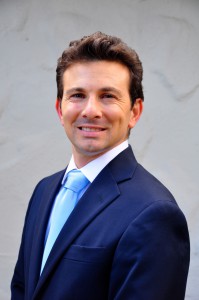
After more than 40 years of operation, DTVE is closing its doors and our website will no longer be updated daily. Thank you for all of your support.
Q&A: Asaf Matatyaou, Harmonic
![]() Asaf Matatyaou, vice-president of solutions and product management for the cable edge business at Harmonic, talks about the virtualised headend.
Asaf Matatyaou, vice-president of solutions and product management for the cable edge business at Harmonic, talks about the virtualised headend.
 What is the virtualised CCAP and how can it help the cable industry achieve its business objectives?
What is the virtualised CCAP and how can it help the cable industry achieve its business objectives?
A software-based, or virtualised, CCAP disaggregates the software from the underlying hardware to provide operators with the advantages associated with IT economics. It eliminates the need to purchase space-consuming and expensive hardware-based CMTS platforms, and breaks the cycle of needing to upgrade hardware every three years or so to accommodate capacity growth requirements. Equally important, virtualisation provides greater operational elasticity and orchestration.
How close are cable operators to moving towards a virtualised headend architecture and what challenges do they face in managing that migration?
It’s already happening. Our Harmonic virtualised CableOS solution is deployed and in trials at select cable operators globally, and is having a direct, positive impact on their ability to deliver high-speed data, video and voice services to their customers.
The migration to a virtualised CCAP is not as difficult as it may seem. In fact, a virtualised CCAP has familiar usability, configuration and management similar to traditional integrated CCAPs. Additionally, CableOS complies with industry Remote PHY standards to provide a common method of connectivity from CableOS CMTS servers to PHY shelves and Remote PHY devices, assuring full RF spectrum coverage and extending network capacity.
What are the respective advantages and disadvantages of centralised and distributed architectures and what do operators need to think about in making a choice?
The tradeoffs and decision on whether to deploy a distributed or centralised architecture depends on the amount of segmentation in the network. With a heavily segmented network, leveraging the deployed nodes is more effective with a centralised CCAP deployment. Alternatively, continued traditional HFC segmentation or a fibre deep plan is more advantageous with a distributed CCAP deployment. Operators can realise space and power cost savings of up to 75% in a centralised CCAP deployment, and up to 90% in a distributed deployment. For example, a hardware-based CCAP typically requires nine racks of equipment to support 80 service groups. In a centralised CableOS architecture, more than 250 service groups can be supported in just four racks – a 7x density difference.
In addition to the space and power savings associated with moving RF components out of the headend and into the field, decoupling the CCAP core from the PHY shelf in a Remote PHY architecture leverages the benefits of digital fibre, such as signal transport over much longer distances and more wavelengths.
What are the main elements of a Remote PHY architecture and how can it benefit operators?
A Remote PHY architecture maintains the data and video cores in the headend but moves the RF deep into the field, so it requires either a high-density centralised PHY shelf or high-capacity nodes with the ability to handle high data throughput. The benefits are fast deployment of IP-based data, video and voice services, sustainable capacity growth, and the ability to resolve space and power constraints in the headend and hub.
What are the key elements of Harmonic’s own approach to enabling cable operators to move to a next-generation broadband architecture?
The CableOS solution is built from a suite of products that work together to deliver data, video and voice services over existing cable infrastructure. All CableOS components are standards-based and interoperable with other compliant Remote PHY products. These include:
- CableOS Core software, which runs on Intel x86 servers and performs all CMTS functions, including control, management and data processing of IP traffic across the cable access network.
- NSG™ Pro, which can serve as either a PHY shelf in a centralised CableOS deployment or as the video core in a distributed deployment.
- CableOS Ripple-1 Remote PHY Node, a hardened outdoor enclosure for networks tasked with delivering video, data and voice services over coax.
- CableOS Pebble-1 Remote PHY Device, a module for the Ripple-1 node that interfaces with the CableOS CMTS to support existing HFC infrastructure and evolving fibre deep deployments with high-speed video and data traffic.


